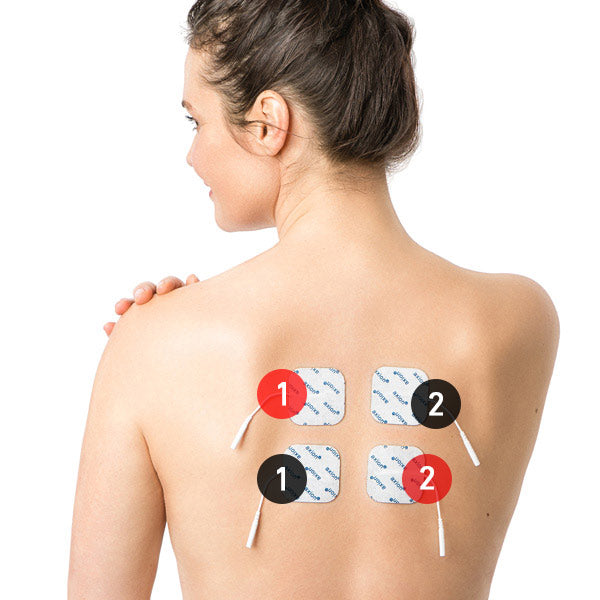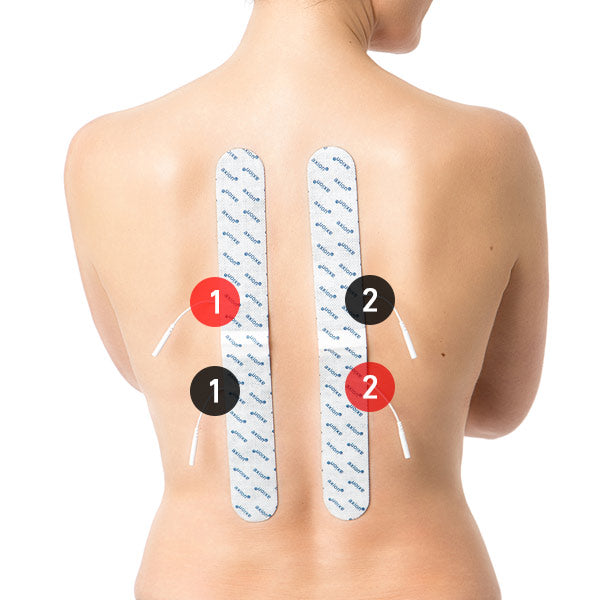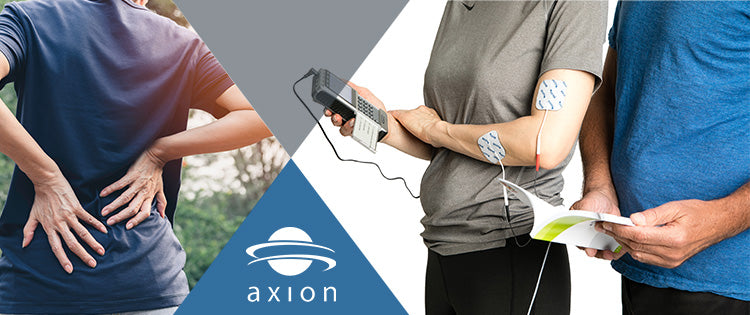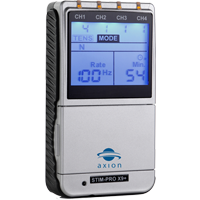TENS application for back pain
 TENS application in combination with targeted muscle training can relieve pain all over the back [1] and has been shown to be effective and fast in relieving pain from acute low back pain [2].
TENS application in combination with targeted muscle training can relieve pain all over the back [1] and has been shown to be effective and fast in relieving pain from acute low back pain [2].To prevent back pain, it is important to combine strengthening of the muscles, improvement of posture, relaxation exercises and back-healthy behaviour. Training the back muscles not only enables an upright and straight posture and an athletic appearance, but can also make a decisive contribution to avoiding or preventing back pain.
Health-oriented back training is recommended. This is a combination of back training, strengthening of the muscles involved, stretching and loosening of various muscles as well as relaxation exercises.


-

This guide is for orientation purposes and does not replace the supervision of a doctor or therapist. Please follow the warnings and safety instructions of your device. Changes and errors are possible.
-

Number inside the circle: Channel number
Circle color: Red = Electrode 1, Black = Electrode 2
The recommended programs for axion TENS units
The STIM-PRO Eco is a manual TENS device. If you have not received parameter settings from your therapist, please use a frequency range between 70 and 120 Hz (burst mode 2 Hz) and a pulse width range between 150 µs and 200 µs.
Please note when using TENS:
The intensity should be adjusted so that it is felt as a pleasant tingling sensation. The duration of the application should be approx. 40 minutes in order to be able to achieve a lasting reduction in pain. It also makes sense to switch programs every now and then.
What are the causes of back pain?

Video tutorial for TENS application for back pain
The advantages of pain treatment with TENS
-

From everywhere
You can use TENS therapy anywhere. It doesn't matter whether you're sitting comfortably on the sofa or in the office.
-

Drug free
TENS pain therapy is an alternative to drug pain treatment
-

At any time
You can use TENS flexibly and at any time. Success can already be achieved after the first treatment
-

Free of side effects
When used correctly, pain treatment with TENS has practically no side effects
Studies and scientific sources








